Australia has some pretty incredible places to wake up to in the morning. One of my favourite sounds to wake up to is waves rolling in, just metres from my bed. Australia has over 10,000 beaches, and you are allowed to camp on a number of them. Many of these are about as good as a beach gets, so we’re pretty lucky here.
We’ve all seen photos of glassy, calm beaches, clear water, and just the right amount of sunshine. The reality is that beaches can also provide the exact opposite; if you want to spend a night or two camping on the beach, there are a few things you’ll want to consider before heading off.
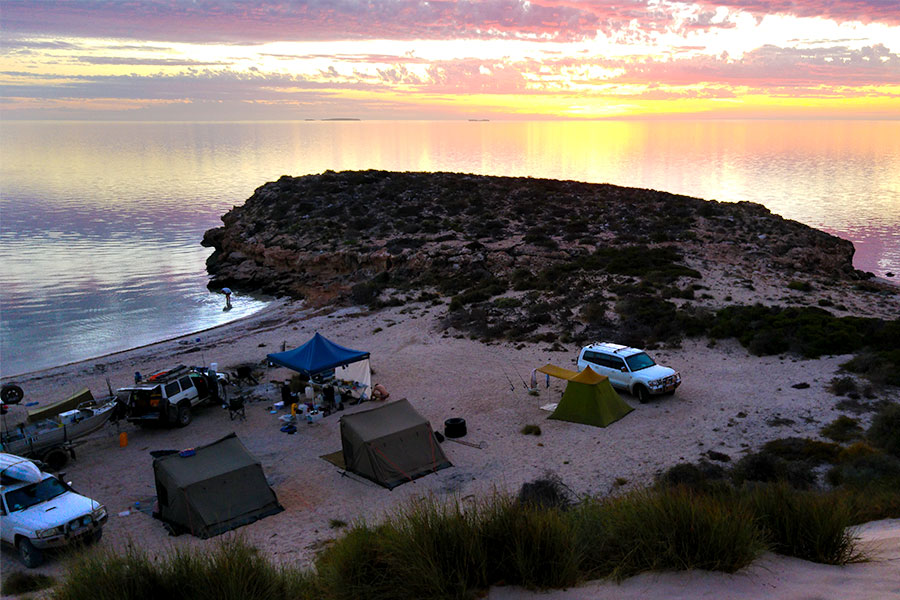
Finding a Beach
Unfortunately, there are plenty of restrictions when it comes to camping in Australia. Aside from the strange looks you’ll get rolling a swag out on the main beach of your local city, you are likely to be asked to move on, and receive a fine by the resident ranger.
In general, the more populated the area the less chance you have of being allowed to camp on that beach. Once you start heading further away from the crowds, finding beaches where camping is allowed becomes easier.
Finding out whether or not you are permitted to camp on a beach is actually quite simple: look for any signs, check the relevant shire websites, follow any National Park regulations, and download helpful apps.
If you find that camping is not permitted, follow the instructions. While you could get away with it for a night or two, it just provides more reason for more places to shut down… and you could end up with an extra bill when you get home!
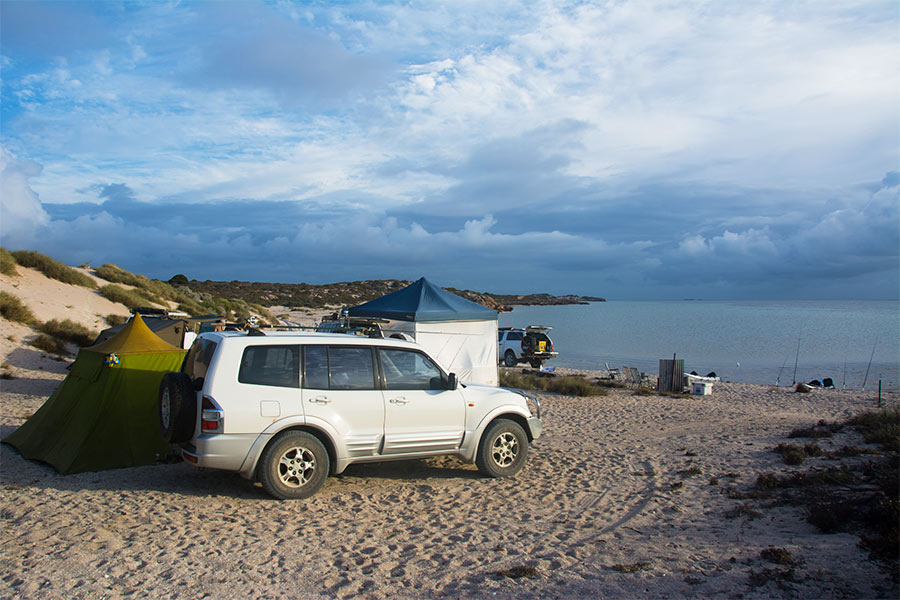
Sometimes, camping off the beach is the best option…
When things are perfect, there’s nothing better than camping right by the water’s edge. However, beaches are not always camping-friendly, and in many situations you will be better off camping a little way back from the beach. You can still be within 30 metres of the water’s edge, but this way you can enjoy far more protection.
In general, the wind is a concern when camping on the beach. If you know it’s going to be good weather, you’re in luck. However, if you suspect that the wind may pick up and can find a sheltered position behind a dune, usually camping off the beach becomes the better decision.
I can tell you from experience that there’s nothing worse than waking up in the middle of the night to the wind lashing at your tent from every direction!
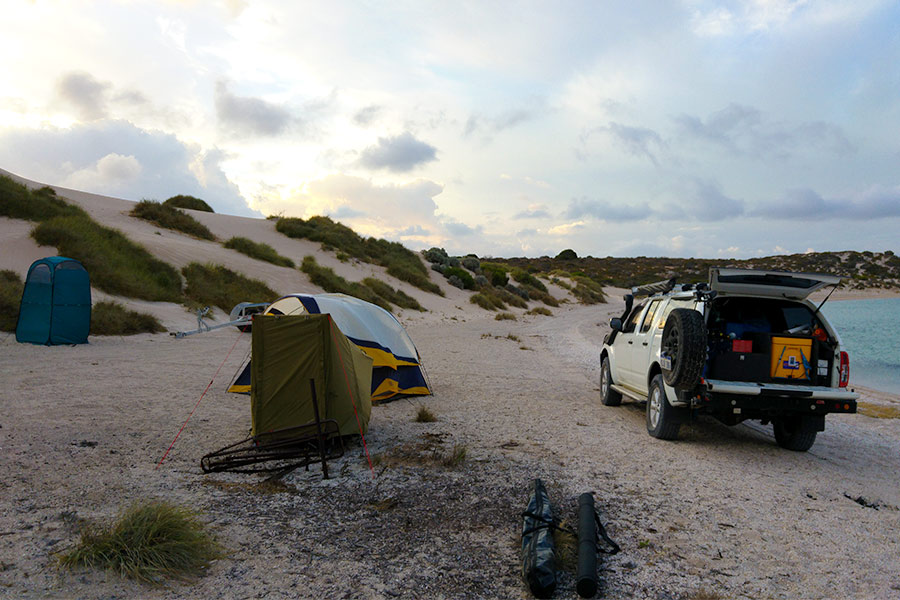
Do Your Research
Before you commit to camping on a beach, take a few minutes to do some online research on tides, wind, and temperature.
Tides
There are many websites online that tell you what the tide will do. In some parts of Australia, it only goes up and down 30 centimetres, and that makes for little of an issue. However, if you are in the northern parts of Australia where they can go up and down 10 metres, you can get into some serious trouble very quickly.
Always consider the tide before setting up your tent… or you may wake up to the ocean running through the front of your tent!
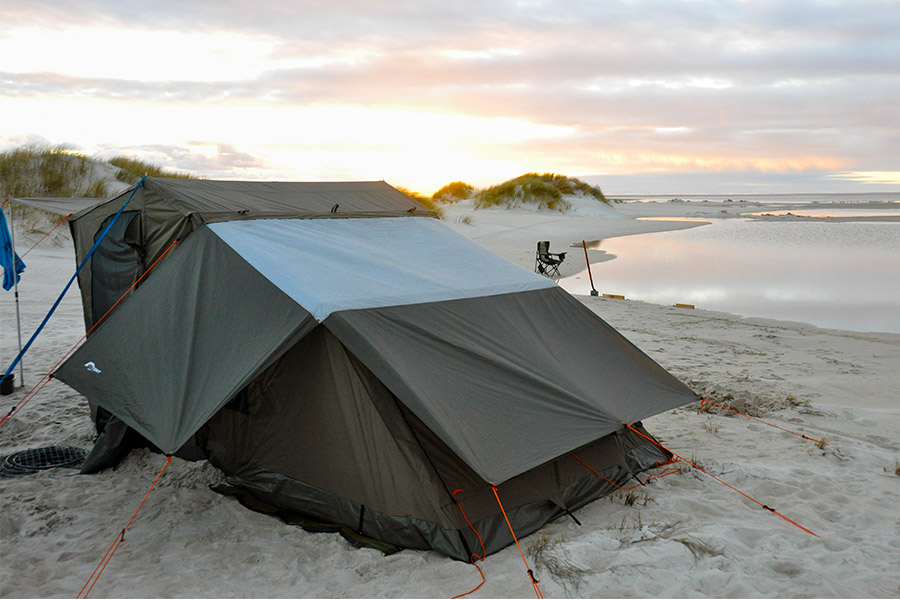
Wind
Weather predictions are becoming more and more accurate, and you can usually gauge what the wind is going to do pretty well before you head away. No, it’s not always perfect, and sometimes you will end up with more or less than predicted – but it gives you an idea.
If you know the breeze is going to come in hard, perhaps it’s better to camp off the beach, where you have a bit of shelter! When setting your tents up, have a good think about where the wind is going to come from and how it will affect your setup. Many tents will fare much better when faced into the wind, with decent aerodynamics.
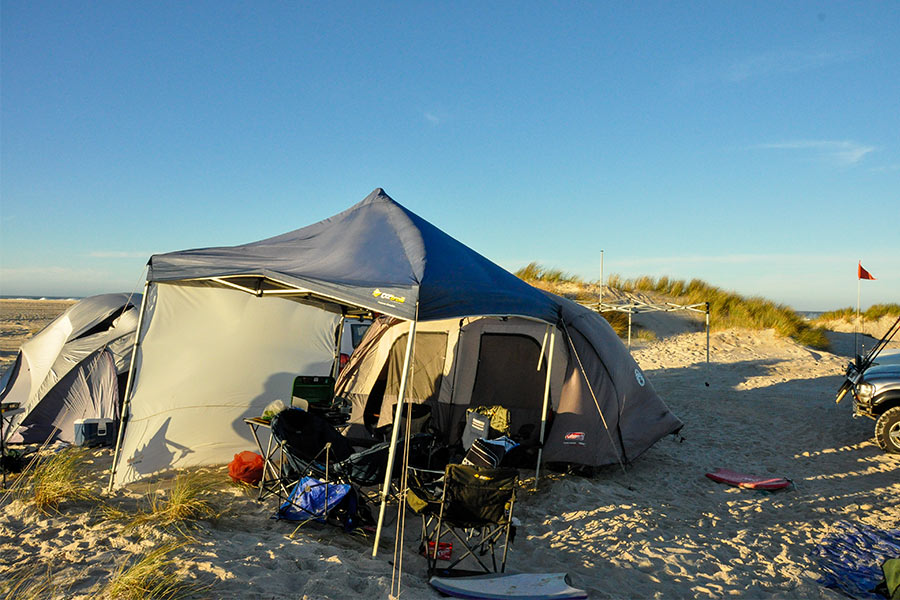
Temperature
There’s nothing better than a warm, sunny day at the beach – but only if you are prepared for it. The temperature will determine what you need to take, and how you set up. If it’s going to be 40 degrees on the beach, you are going to want lots of water and shade. It can also get cold at night, so ensure you take warm clothes just in case.
If you don’t prepare for what Mother Nature may throw your way, your beach camping trip may not be so enjoyable!
Gear for More Comfortable Beach Camping
Shade, Sunscreen and Appropriate Clothing
If you spend time down at the beach without shade, sunscreen, and appropriate clothing, it will be a lesson you won’t forget. On Australian beaches, it doesn’t take more than an hour (even less for some people!) to get badly burnt.
Tourists especially often underestimate how powerful the sun’s rays and heat can be. Look after yourself!
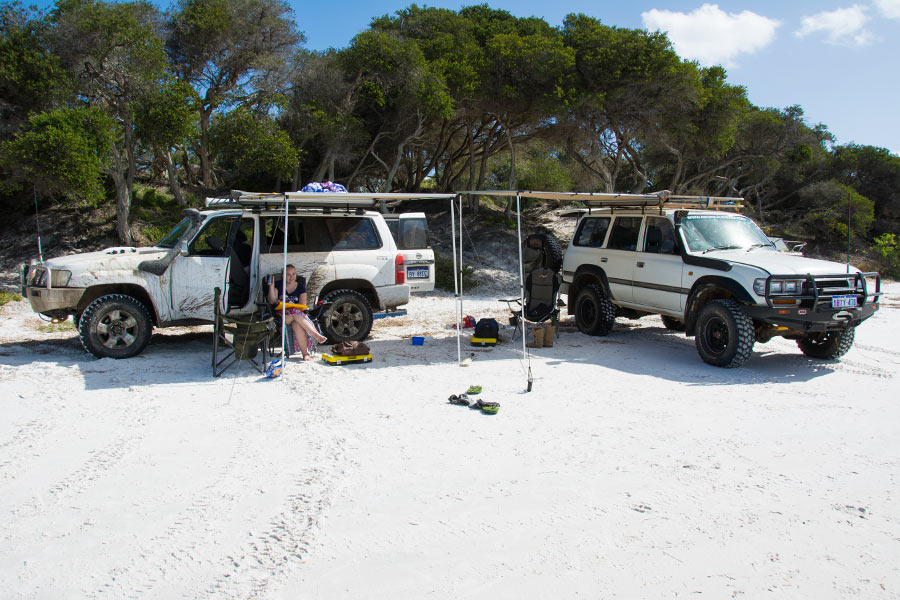
Leave Your Tent Closed
We always try and leave our tents shut when camping on the beach. Little grains of sand will blow past your tent all day; if you don’t secure it closed properly, you can expect to share your bed with a fine layer of sand.
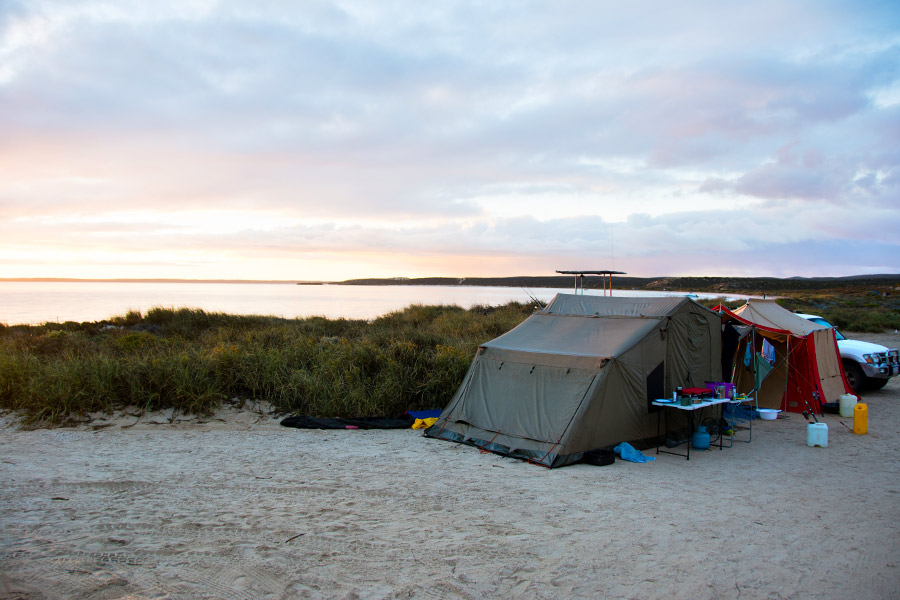
Dustpan and Brush
By the same token, sand will end up where you don’t want it to. It’s inevitable; there’s not a whole lot you can do about it. A simple dustpan and brush will allow you to keep on top of most of it, and makes for easy cleaning of your feet and legs before entering the tent.
Shower
If you are staying on a beach for more than a day, you’ll probably get sick of the salty feeling from swimming in the ocean. At this time, shower is the most comfortable way,wash off the salty.Outdoor portable water heaters are a must for outdoor showers.Such as Camplux 5L Outdoor Portable Water Heater.
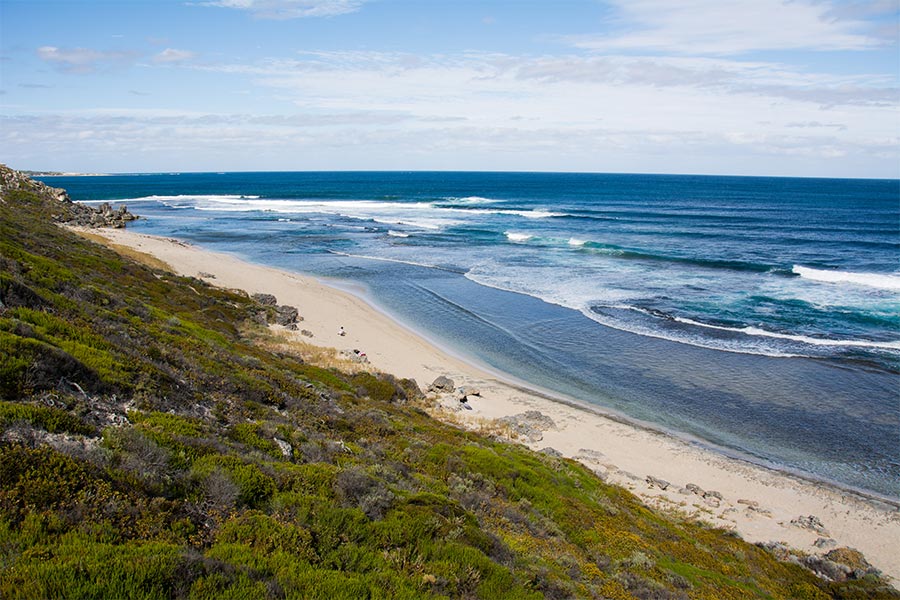
Take Care of Our Beaches
Fires
Having a fire on the beach is a fantastic way to wind down in the evening. However, do it responsibly: in a fire pit, if possible (check the council for specifics), using sustainable timber. Make sure the fire is out when you leave, and do not bury the coals in sand (this keeps them hot). Wind can blow any residual embers to nearby bushes or shrubs, so be extremely careful and aware of the surrounding risks.
When packing up to leave, use sea water to completely extinguish any coals and a non-combustible marker that clearly shows where the campfire has been. A cairn of rocks works well, and may help to reduce the frequent incidence of third-degree burns experienced by the next campers arriving at the site – or kids digging into the sand when building castles!
There should be no indication of a fire ever being on the beach. It is also worth checking the rules of the area, in case there are any fire restrictions in place.
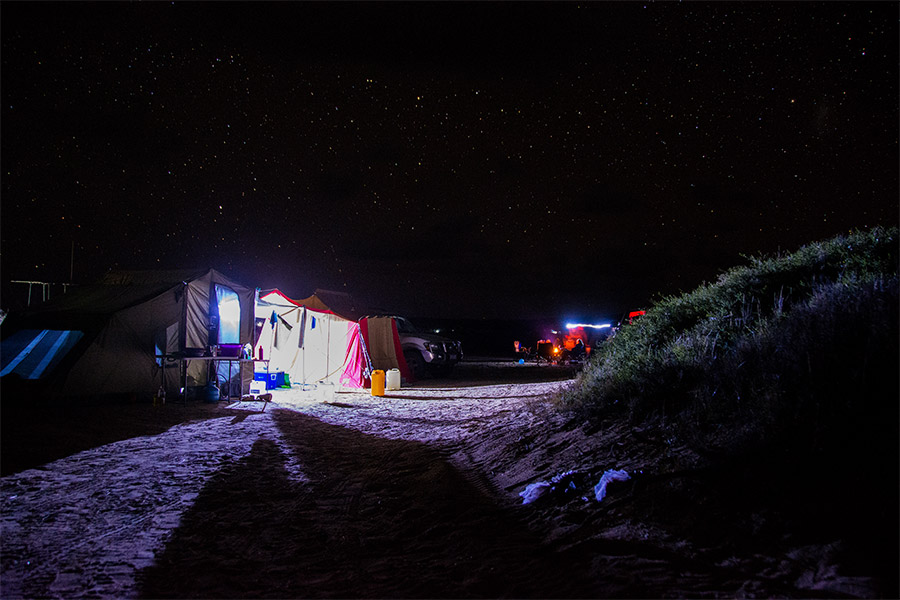
Leave No Trace
Nothing is more annoying or disgraceful than arriving at a beautiful beach to see that others have left it in a filthy state. We have some of the best beaches in the world, so it should be in everyone’s best interest to keep it that way.
There should be no evidence that you have camped in an area on the beach after you leave, except for foot and car tyre prints.
Take all of your rubbish with you, put fires out, and fill the hole in.
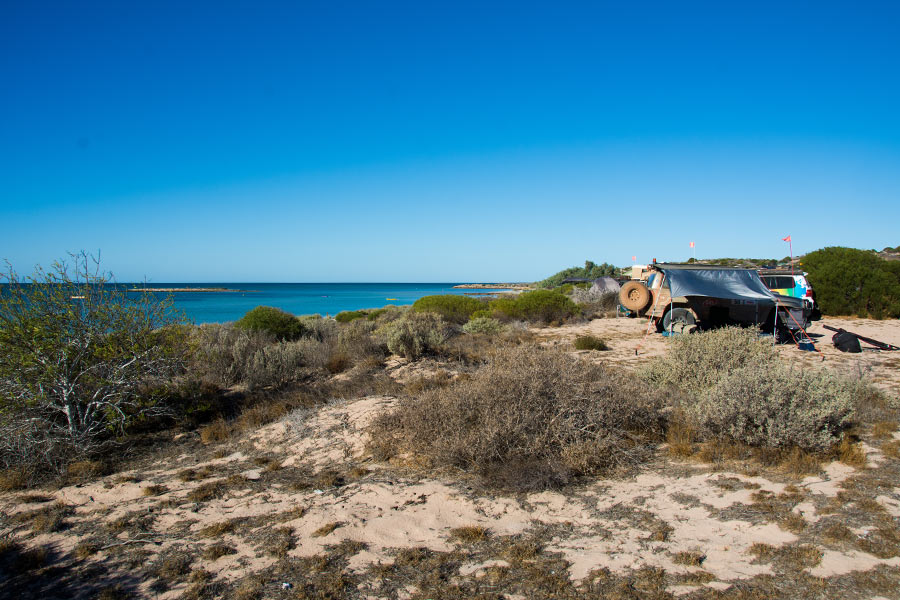
Spending a few nights on a pristine beach is an experience you won’t forget. There may be a few things to change about your usual camping setup, but it’s definitely worth it.
We live in the best country for waking up on the coast – get out there and enjoy it!











